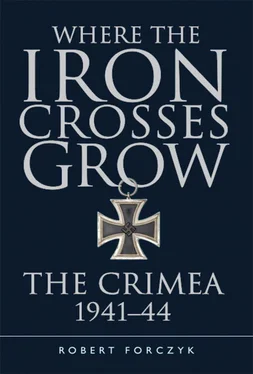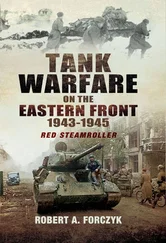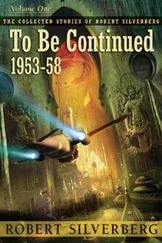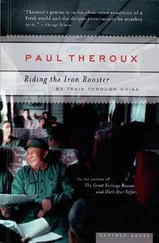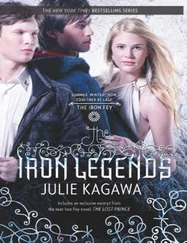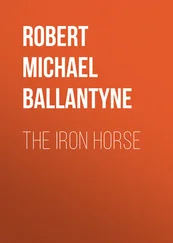This was another excellent defensive position, surrounded by four large lakes and marshy terrain. Kutepov was able to assemble at least 9,000 troops and three tanks at Ishun, whereas the pursuing Red divisions had no more than 15,000 combat-ready troops in hand. The Whites had moved two 12in battleship guns on carriages to Ishun and three 8in-gun batteries, and the Black Sea Fleet was able to deploy several warships to provide naval gunfire support – in short, the Whites had a clear superiority in firepower. Kutepov’s troops fended off the first enemy probing attack on the evening of November 9, but Blyukher’s 51st Rifle Division achieved some success on the west side of the Ishun position on November 10 and was only brought to a halt by naval gunfire. With Wrangel’s attention focused on Ishun, Frunze ordered the 30th Rifle Division to launch a surprise attack across the Chongar Narrows on the night of November 10/11 – which succeeded. In desperation, Wrangel ordered a major counterattack on the morning of November 11, spearheaded by their remaining Cossack cavalry, which nearly broke Kork’s 6th Army. However, the arrival of the vanguard of Philip K. Mironov’s 2nd Cavalry Army led to a costly cavalry battle, which the Whites could not afford. Once it was clear that the White forces had shot their bolt and that their impulsive attack had failed, Wrangel ordered his forces to withdraw from the Ishun position on the evening of November 11.
The Soviet cavalry spread out across the Crimea in hot pursuit, overrunning all of it in less than a week. By the time that Simferopol fell on November 13, Wrangel’s forces were already beginning their evacuation of the Crimea. Wrangel had prepared carefully for evacuation and the operation ran smoothly and efficiently; he succeeded in loading a total of 145,693 soldiers and civilians onto an evacuation flotilla of 126 ships within just two days. [2] W. Bruce Lincoln, Red Victory: A History of the Russian Civil War (New York: Simon and Schuster, 1989), p. 449.
There were still enough loyal sailors to enable the rump Black Sea Fleet to join the evacuation, with the dreadnought General Alekseyev (the former Imperator Aleksandr III/Volya ), two elderly cruisers, 11 destroyers, and four submarines – a ragged flotilla that was soon dubbed “Wrangel’s Fleet.” Other disabled warships were towed out of Sevastopol, which was abandoned on November 14. During the evacuation, Wrangel ordered his retreating White troops not to destroy any facilities in Sevastopol, which he said, “belonged to the Russian people.” The fleet initially went to Constantinople, depositing the remnants of Wrangel’s Volunteer Army at Gallipoli. Three months later, the French granted Wrangel’s Fleet asylum and the warships were sent to Bizerte in Tunisia, where they sat rusting at anchor for years until they were finally scrapped.
Frunze claimed that the Red Army lost 10,000 soldiers in assaulting the Crimea in November 1920, but this seems high. Most of the casualties were in Blyukher’s 51st Rifle Division, which lost upwards of 3,000 men, but otherwise most Soviet divisions saw only brief combat in the Crimea. The Soviet victory there was based more on luck and determination than skill or planning, as was later acknowledged by the Soviet General Staff’s Chief of Operations, Vladimir K. Triandafillov. The forces assigned to storm the Perekop position were grossly inadequate and Frunze based his offensive entirely upon a trick maneuver that succeeded only in part. It was the abrupt collapse of White morale that won the campaign for Frunze, not the tactical skill of the Red Army. Having the means to escape by sea also influenced the White decision to quit a battle that was still in doubt, since many thought it best to run away in the hope of fighting another day than to conduct a last stand.
____________
“There are now over 300,000 bourgeoisie [in the Crimea] who must be dealt with.”
Lenin, December 6, 1920
On the morning of November 15, 1920, the troops of Blyukher’s 51st Rifle Division and Budyonny’s 1st Cavalry Army moved into Sevastopol, led by an armored car marked with a red star insignia and in large red letters, the word “Antichrist.” Wrangel’s Fleet had not yet steamed over the horizon when the victorious Bolsheviks turned to deal with the remaining “enemies of the Revolution” in the Crimea. While some White commanders had dealt harshly with the local population and Bolshevik sympathizers in the Crimea, allowing their troops license to pillage, rape, and murder on occasion, it had not been officially sanctioned policy. Wrangel had made efforts to clamp down on such excesses, since he realized that such acts turned the population against his side. However, Bolshevik leaders had fewer qualms and were not interested in winning “hearts and minds” in the Crimea. Instead, retribution was the order of the day.
On the day following the Red occupation of Sevastopol, the Revolutionary Military Council of Frunze’s Southern Front formed the Revolutionary Committee of Crimea ( Krymrevkoma ), headed by a troika of committed communists consisting of Béla Kun, Rozalia Zalkind (alias Zemliachka), and Georgy L. Piatakov. Kun, a Hungarian Jew, part-time journalist and long-time revolutionary agitator, had returned to Russia after his Hungarian Soviet Republic had collapsed in August 1919. He had already gained a reputation as a violent radical in Hungary, where he was responsible for the murder of over 500 opponents of his short-lived regime. However, the real ramrod on the committee was Zemliachka, a pince-nez-wearing 44-year-old Jewish woman from Kiev. Zemliachka had risen though the Bolshevik ranks since the abortive 1905 Revolution and become a close associate of Lenin. She had also had a fanatic’s lust for violence, and a homicidal antipathy to all “enemies of the party.” Piatakov, although less prominent than either Kun or Zemliachka, was a close associate of Leon Trotsky and was intent upon eliminating residual ethnic nationalism in the new Soviet Union – particularly Ukrainian and Tatar. These three committed and ruthless communists were tasked by Lenin with implementing the elimination of all “class enemies” in the Crimea, later known as the Red Terror. Three special detachments of the newly formed Crimean Cheka (KrymChK) security troops were put at their disposal. The Cheka formed a special Crimean Strike Group ( Krimskoy Oodarnoy Grooppi ), led by Nikolay M. Bistrih, but also made arrangements to use Red Army troops as well.
Prior to conquering the Crimea, Bolshevik leaders had promised amnesty to all White troops who surrendered, and many enlisted soldiers had opted not to join Wrangel’s evacuation in hopes of remaining in their home country. About 3,000 White troops remained in Feodosiya when the Red Army entered the city, and they peacefully laid down their arms. After being disarmed, many White soldiers offered to join the Red Army, but instead, soldiers of the Red Army 9th Rifle Division, under the direction of Bistrih’s Chekists, executed 420 wounded White soldiers and put the rest in two concentration camps. As it turned out, this was just the opening act in a five-month terror campaign. On November 17, 1920, the Krymrevkoma issued an order for everyone in the Crimea to complete a mandatory registration within three days; predictably, the registration was merely a means to identify “class enemies.” In Feodosiya, soldiers from the 9th Rifle Division arrested 1,100 people who registered, of whom 1,006 were shot, 79 imprisoned, and only 15 released.
The Cheka and Red Army execution squads quickly spread the Red Terror across the Crimea. Initially, the victims were primarily former White officers and wealthy landowners, but once these were gone the Terror moved on to eliminating common enlisted soldiers, then potential opponents in the general civilian population. People were condemned for just having displayed “sympathy for the White cause,” which included dockyard workers in Sevastopol who unloaded supplies from ships during White rule in the Crimea. Soon, members of the clergy, teachers, intellectuals, students, and even medical staff were targeted. In Sevastopol, Cheka death squads and soldiers from the 46th Rifle Division used firing squads and massed hangings to murder at least 12,000 people without trial. Bodies were left hanging all over the city to terrorize the rest of the population. In Kerch, prisoners were loaded onto barges that were then sunk in the Sea of Azov. In Simferopol, capital of the Crimea, at least 20,000 were murdered. Apparently, these numbers were not good enough for Kun and Zemliachka, who accused local Bolshevik officials of being “too soft.” In addition to murder, the Chekists employed torture and rape to break those prisoners held in their concentration camps, while the Red Army was allowed to pillage to its heart’s content. Not everyone meekly submitted to the Red Terror; some Crimean Tatars slipped off to the Yalai Mountains in the southern part of the peninsula and attempted to wage guerrilla warfare against the Red Army and Chekists. Known as the Green Forces, these Tatars had no chance against the better-armed and organized Red Army.
Читать дальше
